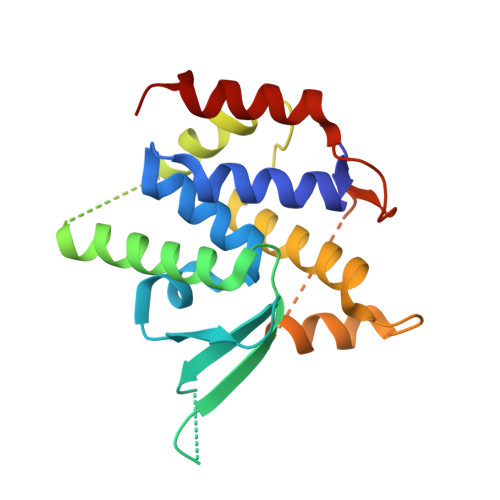Structure analysis of the telomere resolvase from the Lyme disease spirochete Borrelia garinii reveals functional divergence of its C-terminal domain.
Semper, C., Watanabe, N., Karimullina, E., Patel, D.T., Di Leo, R., Castellanos, M., Patel, D.H., Chaconas, G., Savchenko, A.(2024) Nucleic Acids Res 52: 8431-8442
- PubMed: 38979576
- DOI: https://doi.org/10.1093/nar/gkae580
- Primary Citation of Related Structures:
8VJ1, 8VS5 - PubMed Abstract:
Borrelia spirochetes are the causative agents of Lyme disease and relapsing fever, two of the most common tick-borne illnesses. A characteristic feature of these spirochetes is their highly segmented genomes which consists of a linear chromosome and a mixture of up to approximately 24 linear and circular extrachromosomal plasmids. The complexity of this genomic arrangement requires multiple strategies for efficient replication and partitioning during cell division, including the generation of hairpin ends found on linear replicons mediated by the essential enzyme ResT, a telomere resolvase. Using an integrative structural biology approach employing advanced modelling, circular dichroism, X-ray crystallography and small-angle X-ray scattering, we have generated high resolution structural data on ResT from B. garinii. Our data provides the first high-resolution structures of ResT from Borrelia spirochetes and revealed active site positioning in the catalytic domain. We also demonstrate that the C-terminal domain of ResT is required for both transesterification steps of telomere resolution, and is a requirement for DNA binding, distinguishing ResT from other telomere resolvases from phage and bacteria. These results advance our understanding of the molecular function of this essential enzyme involved in genome maintenance in Borrelia pathogens.
- Department of Microbiology, Immunology, and Infectious Disease, University of Calgary, 3330 Hospital Drive, Calgary, Alberta T2N 4N1, Canada.
Organizational Affiliation:
















